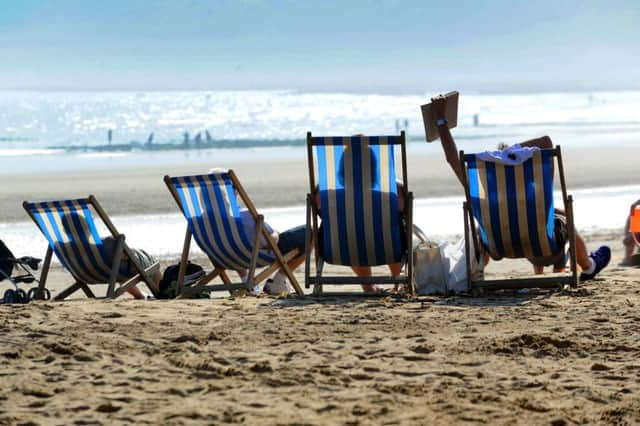Heaven 17 star Martyn will capture sounds of the British seaside


Now the public is being asked to record the noises of seashores across the UK in order to build up a “sound map” of the country’s coastline which will be added to the British Library’s Sound Archive.
The recordings, which could range from the sounds of a working fishing village to the wind whistling over cliffs in Poldark country, will be used to create a new piece of music, inspired by the coasts, by Sheffield man Martyn Ware of Human League and Heaven 17.
Advertisement
Hide AdAdvertisement
Hide AdThe scheme, by the National Trust, National Trust for Scotland and the British Library, will allow people to record and upload up to five minutes of sound onto the online map, with the organisers hoping to capture sound from across the 10,800-mile UK coastline..
The “sounds of our shores” project coincides with the 50th anniversary of the National Trust’s Neptune Coastline Campaign to protect the UK’s coasts, with the organisation now managing 775 miles of coastline in England, Wales and Northern Ireland.
Cheryl Tipp, curator of wildlife and environment sounds at the British Library, said: “There is something really evocative about the sounds of our coast; they help shape our memories of the coastline and immediately transport us to a particular time or place when we hear them. As millions of us head to the coast this summer for holidays or day trips we want the public to get involved by recording the sounds of our amazing coastline and add them to the sound map.
“This could be someone wrestling with putting up a deckchair, the sounds of a fish and chip shop or a busy port.
Advertisement
Hide AdAdvertisement
Hide Ad“We’d also love to hear from people that might have historic coastal sounds, which might be stored in a box in the loft. This will help us to see how the sounds of our coastline have changed over the years.”
She said people could have sounds recorded on cassette tapes, mini-discs or even old phonograph cylinders, and old sounds could range from visiting fun fairs to natural areas that have since built up or working fishing villages which are no longer busy.
The British Library already has a good collection coastal recordings but “there are gaps” which the project hopes to identify and fill. And she said: “It’s not just about the sounds of the sea, although it’s a beautiful sound and no two beaches sound the same so we’re happy to have waves.”
But the project is also encouraging people to “think outside the box” and record different sounds, such as on piers and sea-fronts, while the organisers have also recruited the Wildlife Sound Recording Society to gather sounds of wildlife around the coasts. Sounds can be recorded on a smartphone, tablet or handheld recorder, and uploaded to the map, which will be hosted on the British Library website, via the audioBoom free website or app.
Advertisement
Hide AdAdvertisement
Hide AdThe recordings, which need to be uploaded by Monday September 21, should be a maximum of five minutes, and images and words about the sound can be added.
They will join 6.5 million sounds dating back to the first recordings in the 19th century that are held in the sound archive, including storms and waves to birdsong and weather.
For more information about the scheme, visit www.nationaltrust.org.uk/coastal-sounds,